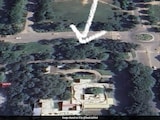Bhai Dooj, also known as Bhai Phota in Bengal, is a major Hindu festival that celebrates the bond between brothers and sisters. Falling two days after Diwali, it holds immense cultural and emotional significance in India. The festival is made up of two words - "Bhai" meaning brother and "Dooj" meaning the second day after the new moon, which is the day of its celebration. On this auspicious day, sisters express their love and affection for their brothers by performing aarti, applying tilak (vermilion) on their foreheads, and tying a protective thread around their wrists.
Also Read | The Five Days Of Diwali And The Festival's Spiritual Significance
This symbolic act signifies sisters' prayers for their brothers' well-being and long life. In return, brothers shower their sisters with gifts and promise to protect and support them throughout their lives. With Bhai Dooj, five-day-long celebrations of Diwali conclude.
The legend behind Bhai Dooj is deeply rooted in Hindu mythology. According to one popular story, Yama, the god of death, visited his sister Yamuna on this day. Yamuna warmly welcomed her brother and applied tilak on his forehead. Touched by her love and hospitality, Yama granted Yamuna a boon that whoever receives tilak and aarti from their sister on this day would be blessed with a long and prosperous life.
The rituals associated with Bhai Dooj vary across different regions of India, adding diverse flavours to the celebration. In some places, sisters prepare a special meal for their brothers, while in others, families come together for festive gatherings. The exchange of gifts, sweets, and the ceremonial tilak reinforces the emotional connection between siblings.
Bhai Dooj serves as a reminder of the importance of family ties and the unconditional support that siblings provide each other throughout their lives.
The festival not only strengthens the bond between brothers and sisters but also fosters a sense of unity and togetherness within the whole family.















